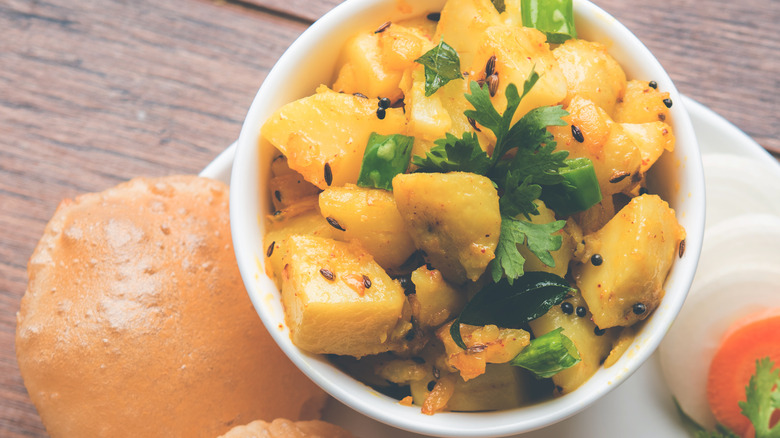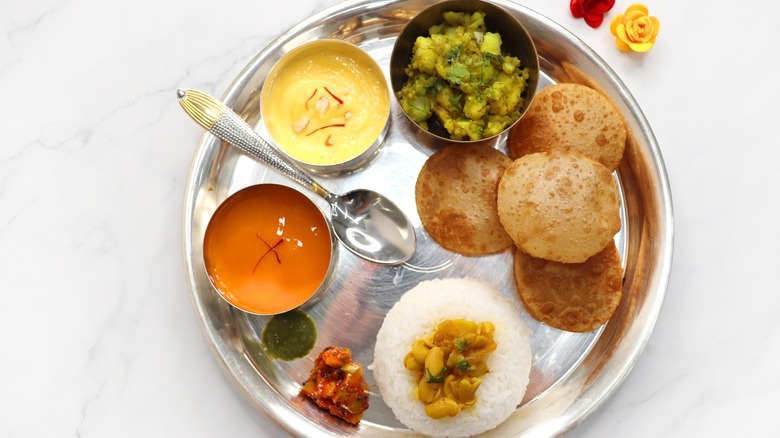Batata Bhaji: The Indian Potato Dish That's Offered To Gods
The creamy potato dish Batata Bhaji holds a unique place in Maharashtrian cuisine. Known for its cubed potatoes of turmeric-yellow color, Batata Bhaji is versatile. It succeeds as a modest at-home comfort food or a delicious part of a formal banquet spread, explains Kali Mirch.
Batata Bhaji appears as a side dish in a thali or alongside dal and rice. It can also be a main course paired with puri, roti, or chapati, says Archana Mundhe, author of the Ministry of Curry. The potatoes make for excellent filling for dosas, sandwiches, or parathas, suggests Shweta Arora of Shweta in the Kitchen.
The recipe is straightforward, vegan, and easy to make since it requires few ingredients. Potatoes are mixed with spices and aromatics: turmeric, mustard seeds, cumin, asafoetida, curry leaves, and fresh ginger make up Batata Bhaji. Salt and sugar round out the flavors, alongside lemon or lime for acid and cilantro as a garnish, according to Arora. Onions and garlic are optional. The dish can be assembled in an Instant Pot or on a stove with a pressure cooker for the potatoes and a wok for sautéing the other ingredients. Mundhe writes that home cooks can use Batata Bhaji's versatility to their advantage when meal prepping. Making a large batch at the beginning of the week opens up opportunities to use the potatoes for many meals as a side dish, a filling, or the main course.
Batata Bhaji: a food of worship
Batata Bhaji's main ingredient, the potato, while once a novelty in India, is now distinctly Indian. Originally from Peru, the potato spread worldwide due to European colonialism, explains Diya Kohli in Condé Nast Traveller. Traders from Portugal and the Netherlands first brought potatoes to India. Still, it remained a rare food. Only in the 18th century when the British colonial forces led a campaign to "civilize" India did potatoes become a popular crop. The British hoped to replace traditional Indian produce with superior counterparts.
The British colonizers thought potatoes would replace rice as the starchy staple of India's diet, says Kohli. Instead, potatoes became incorporated into traditional cuisine due to their nutritious value and relatively low cost. For example, potatoes became an ingredient in biryani, a rice-based dish. India rejected British political and cultural influence but kept potatoes as authentic Indian cuisine for many regions and cultural groups.
Batata Bhaji is an excellent example of how the potato has been adopted in some parts of India, particularly for Hindu rituals and celebrations. The dish is often used as a naivedya (offering to the gods), specifically to Ganesh during the Ganesh Festival (via Shweta in the Kitchen). If Batata Bhaji is made for offerings or puja, onion and garlic are left out. The potato dish contains many symbols of Indian history and religious tradition.

